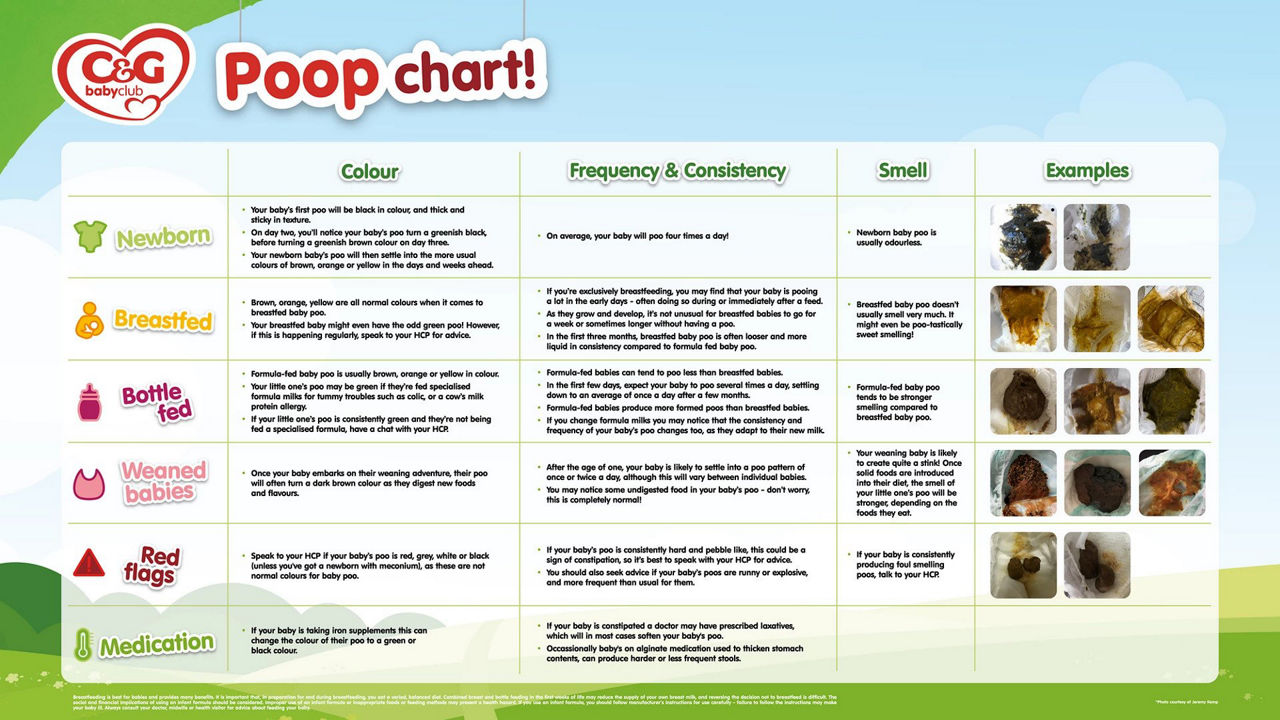It might sound strange, but the sight of your baby’s first poo will be something you welcome. It’s called meconium and will be dark green and black in colour and your baby will pass it in the first 48 hours after birth, with some babies doing so during birth1. This dark green meconium substance is made up of a number of things that your baby has swallowed during your pregnancy, including skin cells, hair and amniotic fluid, that your baby has swallowed during your pregnancy (2, 3). It may take up to a few days for your baby to pass all of the meconium in their system.
The colour of your baby’s stools will change as your baby grows. Over the next few days it will start to turn brown, orange or yellow, depending on whether your baby is breast or formula fed. Breastfed baby poo tends to be yellow, whereas formula fed baby poo can be yellow-green or a pale brown. Once your baby starts eating solid food, their poo is likely to turn into a darker colour.
Dark green baby poo might sound and look strange, but it’s usually nothing to worry about. Some formula milks designed to help with digestion problems can cause dark green or green baby poo, but if it persists, talk to your midwife or GP to rule out any underlying issues1.
You should always seek medical advice from your healthcare professional if your baby’s poo is1:
- Watery.
- Hard (this could be a sign of constipation).
- Pale in colour.
- Contains blood.
The above could indicate a problem with your baby’s health that needs to be checked and treated.
Take a look at our baby poo colour chart to get a better idea of what to look out for.


